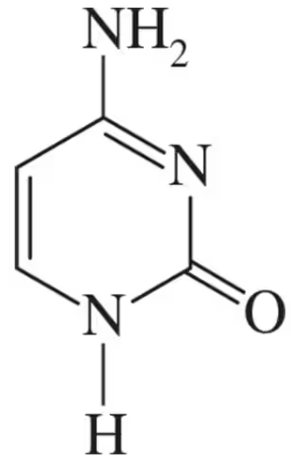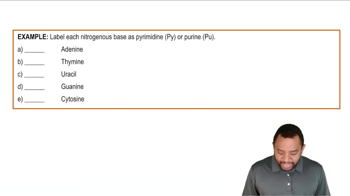Textbook Question
Identify each of the following bases as a purine or a pyrimidine:
a. guanine
598
views

 Verified step by step guidance
Verified step by step guidance Verified video answer for a similar problem:
Verified video answer for a similar problem:



 1:49m
1:49mMaster Nitrogenous Bases Concept 1 with a bite sized video explanation from Jules
Start learningIdentify each of the following bases as a purine or a pyrimidine:
a. guanine
Identify each of the following bases as a pyrimidine or a purine:
b. adenine